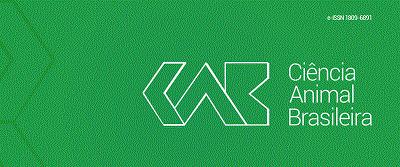The common domestic equine species present various hematological differences within reference values as a result of age, breed, sex, physical activity, among others. Therefore, it is important that reference intervals should be established for these particularities. This work aimed to evaluate sequential changes in hematological parameters of healthy Thoroughbred foals from birth to six months of life. Blood samples were collected immediately after birth (before the intake of colostrum), at 24 h, 7 days, 1, 2, 3, 4, 5 and 6 months of age in order to measure packed cell volume (PCV), total plasma protein (TPP), fibrinogen and white blood cells (WBC). Descriptive statistics, analysis of one-way AOV and comparison between means by LSD test were accomplished. Hematological values were assessed in 1426 samples. The curve variations in PCV, total plasma protein, fibrinogen and WBC values observed in healthy Thoroughbred foals from birth to 6 months were similar to those described for other breeds. However, we verified higher TPP values than mean reference values at all ages. The ranges of fibrinogen and WBC showed small intervals and maximum values below the hematologic reference values for all ages. These changes in hematologic values provide useful information for clinical evaluation of Thoroughbred foals.
equine neonatal; fibrinogen; hematologic profile; total plasma protein
As espécies domésticas de equídeos apresentam diferença nos valores hematológicos de referencia devido à idade, raça, sexo, atividade física, entre outros.Tendo em vista estas particularidades, é importante o estabelecimento de parâmetros de referência. O objetivo deste trabalhado foi avaliar as mudanças sequenciais de parâmetros hematológicos de potros Puro Sangue Inglês, saudáveis, do nascimento aos seis meses de vida. Amostras sanguineas foram coletadas imediatamente após o parto (antes da ingestão de colostro), as 24h, 7 dias, 1, 2, 3, 4, 5 e 6 meses de idade para mensuração de hematócrito, proteínas plasmáticas totais (PPT), fibrinogênio e leucócitos totais. Foi realizada estatística descritiva, análise de variância simples (teste One-way AOV) e comparação entre as médias pelo teste de LSD. A avaliação hematológica foi realizada em 1426 amostras. A curva de variação do hematócrito, PPT, fibrinogênio e leucócitos totais observada nos potros do nascimento aos 6 meses de idade foram similares às descritas para outras raças. No entanto, valores médios de PPT foram mais elevados durante todo o período. As médias de fibrinogênio e leucócitos apresentaram pequenos intervalos e máximos valores abaixo dos valores de referencia em todos os momentos. As alterações em valores hematológicos têm importância na avaliação clínica de potros Puro Sangue Inglês.
fibrinogênio; neonatologia equina; perfil hematológico; proteína plasmática total
References
- 1 Grondin TM, Dewitt SF. Normal hematology of the horse and donkey. In: Weiss DK, Wardrop KJ. Schalm's Veterinary Hematology. 6th ed. Iowa: Wiley-Blackwell, 2010. p.821-828. English.
- 2 Axon JE, Palmer JE. Clinical Pathology of the Foal. Veterinary Clinics of North America Equine Practice. 2008;24(2):375–385.
- 3 Muñoz A, Riber C, Castejón F. Age and gender related variations in hematology, clinical biochemistry, and hormones in Spanish fillies and colts. Research in Veterinary Science. 2012;93(2): 943-949.
- 4 Harvey JW, Asquith RL, McNulthy PK. Haematology of foals up to one year old. Equine Veterinary Journal. 1984;16(4):347-353.
- 5 Harvey JW. Normal hematologic values. In: Koterba AM, Drummond WH, Kosch PC. Equine Clinical Neonatology. 1st ed. Philadelphia: Lea & Febiger. 1990. p.561–570.
- 6 Aoki T, Ishii M. Hematological and Biochemical Profiles in Peripartum Mares and Neonatal Foals (Heavy Draft Horse). Journal of Equine Veterinary Science. 2012; 32(3):1-7.
- 7 Möllerberg L, Ekman L, Jacobsson SO. Ferrokinetic studies in normal and iron deficiency anemic calves. Acta Veterinary Scandinava. 1975;16(2):205-17.
- 8 Mueggler PA, Peterson JS, Koler RD, Metcalfe J, Black JA. Postnatal regulation of oxygen delivery: hematologic parameters of postnatal dogs. American Journal of Physiology. 1979;237(1):71-75.
- 9 Hutton EK, Hassan ES. Late vs early clamping of the umbilical cord in full-term neonates: systemic review and meta-analysis of controlled trials. Journal of American Veterinary Association. 2007;297(11)1257–1258.
- 10 Veiga APM, Lopes STA, Franciscato C, Oliveira LSS, Merini LP. Hematological values, plasma protein and fibrinogen of Criollo horse – their variation with sex, age and management. Acta Science Veterinary. 2006;34(3)275-279.
- 11 Stoneham SJ. Assessing the newborn foal. In: Paradis MR. Equine Neonatal Medicine. 1st ed. Elsevier: Philadelphia. 2006. p.7-10.
- 12 Rossdale PD. The maladjusted foal: influence of intrauterine growth retardation and birth trauma. In: Proceedings of the 50th Annual Convention of the American Association of Equine Practitioners, Denver, CO, Proceedings... 2004, Denver, p.75-126.
- 13 Koterba AM, Brewer BD, Tarplee FA. Clinical and clinicopathological characteristics of the septicaemic neonatal foal: review of 38 cases. Equine Veterinary Journal. 1984;16(4)376–383.

 Hematologic values of thoroughbred foals from birth to six months of age
Hematologic values of thoroughbred foals from birth to six months of age
